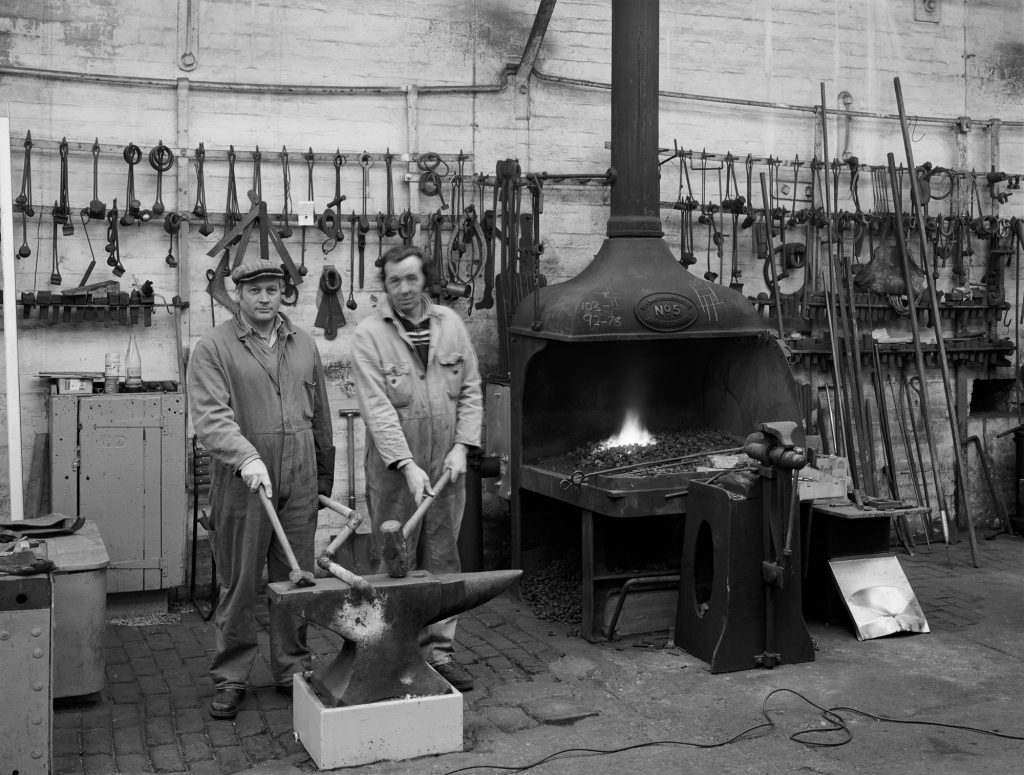Opening 18 June – 31 October 2021 | Tue – Fri 10.30 – 15.30 | Weekend 9.00-17.00
Underfall Yard | Cumberland Rd, Bristol BS1 6XG
This series of photographs of Bristol Harbour in the late 1970s by Jem Southam provide a unique and definitive portrait of the harbour at a time of rapid change. One of Southam’s first major projects, the photographs were published in ‘The Floating Harbour: A Landscape History of the Bristol City Docks’ (1983) and majority of the works will be exhibited here for the first time.

Jem Southam’s grandfather, Harry Cottrell, spent his working life in the Bristol docks as a shipping clerk, overseeing the arrival, unloading and distribution of guano and other such commodities from an office in Queens Square. As a result, when Southam began work at Arnolfini on Narrow Quay in 1977, the city docks held a special meaning for him, despite knowing very little of them or their workings.
‘One day, looking out the window of our office I watched as a large shed was torn down across the other side of the quay. I went over during the lunchbreak with my camera and took some pictures, and as I was doing so realised that the whole of the dockland was going to shortly experience a similar fate. Here was a project waiting for me, and for the next 4/5 years I photographed across the whole of the Floating Harbour.


The city had at that time turned its back on the docks. They were run down, only a few surviving industries hung on – the sand wharves regularly brought boats up the river laden with the dredges sand from the Severn Estuary; the timberyards kept going a couple more years; the hydraulic pumphouses still powered some of the bridges and a few of the bonded warehouses remained in use. However the closure of the William Hill shipbuilding yards in 1976 had really put the working life of the docks.
As a result they were almost deserted, and I would spend my Sundays cycling and walking around, rarely meeting a soul. A plan quickly formed to make an archival record of the landscape and remaining architecture of the Floating Harbour in a relatively systematic manner. In my imagination I broke the docks up into a series of different sites, sometimes defined by their use, sometimes just a geographical coherence, and made studies of each one of them.’
Southam photographed sites including Bathhurst Basin, Welsh Back, Cumberland Basin, and Narrow Quay alongside sets of pictures of specific types of dockland furniture – the cranes, the pumphouses, the bridges. Studies were made of individual buildings and their setting, and then further pictures were made of these buildings into the wider landscape. The pictures were all made in black and white using an old-fashioned plate camera and over the course of the project, approximately 1000 negatives were exposed.

In the early 1980’s Southam collaborated with John Lord and ‘The Floating Harbour – A landscape History of Bristol City Docks’ was published by John Sansom at Redcliff Press in 1983, and in this same period a couple of small exhibitions of the work were held in the city.
‘’It was always the plan to show some of the pictures in Bristol, well after many people’s memories of the of what they once were had faded, and it is a great pleasure to be participating with the Bristol photography Festival in displaying some pictures outside in the docks themselves.’
Born in Bristol in 1950, Jem Southam’s work is housed in major collections including Rijksmuseum, Amsterdam; Museum Folkwang, Essen; and the Yale Center for British Art, Newhaven. His work has been the subject of numerous international solo exhibitions notably, Tate St Ives (2004), V&A Museum, London (2006) and The Lowry, Salford (2009).


